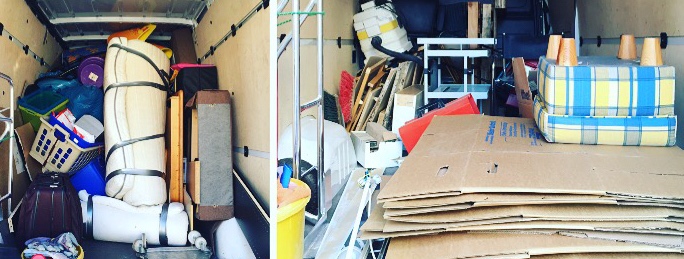
Windows are an essential feature of any home or commercial building, offering natural light, ventilation, and a view of the outside world. However, they also present vulnerabilities when it comes to safety and security. Whether it’s accidental breakage, storm damage, or forced entry, traditional glass can shatter easily, posing risks to occupants and property. This is where safety film for windows becomes a valuable solution.
What is Safety Film for Windows?
Safety film for windows is a transparent, adhesive-coated polyester film applied directly to glass surfaces. It is designed to hold shattered glass in place in the event of breakage, thereby reducing the risk of injury from flying shards and preventing easy access through broken windows. This film is typically available in various thicknesses, depending on the level of protection required.
This film doesn’t just serve one purpose; it’s a multipurpose tool used to enhance security, reduce accidents, and even improve energy efficiency and UV protection in some versions. It’s a cost-effective alternative to replacing existing glass with impact-resistant or laminated glass.
Benefits of Installing Safety Film for Windows
Enhanced Protection from Breakage
One of the most significant advantages of using safety film for windows is the way it holds shattered glass together. In homes, especially those with children or pets, windows can be broken accidentally. With safety film, the risk of injury is minimized because the glass is less likely to break into dangerous shards.
In areas prone to natural disasters like hurricanes or earthquakes, safety film can help keep windows intact longer during impact or pressure changes, reducing the chance of debris flying inside the property.
Increased Security Against Intrusions
Safety film for windows also acts as a deterrent to burglars. Since the film makes glass more difficult to break through, it delays forced entry and increases the time and effort required to gain access. This delay can be enough to discourage intruders or allow time for alarm systems to alert authorities.
In high-crime areas or for commercial properties with valuable contents, this added security layer is often a crucial investment.
UV Ray Protection
Many safety films are engineered to block up to 99% of harmful ultraviolet (UV) rays. UV rays can cause furniture, flooring, curtains, and artwork to fade over time. By installing safety film for windows, you can protect your interior investments without sacrificing natural light.
This protection is especially beneficial for retail stores, museums, and residential properties with large windows or valuable furnishings.
Energy Efficiency
Modern safety films may also offer solar control benefits. These films can reduce glare and heat buildup by reflecting a portion of the sun’s rays. This helps to maintain a more consistent indoor temperature, which in turn can reduce the need for air conditioning and lower energy bills.
This dual-purpose feature—enhanced safety and improved energy performance—makes safety film a practical upgrade for environmentally conscious homeowners and businesses alike.
Types of Safety Film for Windows
Clear Safety Film
Clear safety film provides all the benefits of shatter resistance and UV protection without altering the appearance of your windows. It’s ideal for homeowners who want added security and safety without changing their view or affecting natural light.
Tinted Safety Film
Tinted safety film adds the same level of shatter resistance but includes a color tint for added glare and heat control. This option is suitable for buildings in hot climates or where privacy is also a concern.
Reflective Safety Film
Reflective films offer a mirrored appearance from the outside, providing additional daytime privacy while reducing heat and glare. These are often used in commercial buildings to balance aesthetics and functionality.
Decorative Safety Film
Decorative versions of safety film combine design with protection. These films come in patterns or frosted finishes that enhance the look of your space while still offering the core benefits of glass retention and UV protection.
Installation Process of Safety Film for Windows
Installing safety film for windows is a straightforward process, but it’s typically best left to professionals to ensure a bubble-free and long-lasting result.
The process generally includes the following steps:
- Cleaning the Glass: The surface must be thoroughly cleaned to remove any dust, oil, or debris that might interfere with the adhesion.
- Measuring and Cutting: The film is measured and cut precisely to fit the window’s dimensions.
- Application: A special solution is sprayed on the glass to allow the film to be positioned correctly. The film is then applied and smoothed using a squeegee to remove air bubbles and excess solution.
- Drying and Curing: It may take several days to a few weeks for the film to fully adhere and cure, depending on the film type and weather conditions.
Professional installation ensures that the film is applied evenly, with no visible creases or trapped particles, and that its protective properties are fully optimized.
Common Applications of Safety Film for Windows
Safety film for windows is used in a wide range of settings:
- Residential Homes: To protect against accidents, intruders, and UV damage.
- Schools and Daycares: To provide a safer environment for children.
- Retail Stores: To prevent theft and reduce sun damage to merchandise.
- Offices: For energy efficiency and occupant protection.
- Government Buildings: For added security in sensitive areas.
- Hospitals and Healthcare Facilities: To protect patients and staff from accidental glass breakage.
Maintenance and Durability
Once installed, safety film for windows requires very little maintenance. It can be cleaned using mild soap and water with a soft cloth. Abrasive cleaners and tools should be avoided as they can scratch or damage the film.
With proper care, safety films can last up to 10–15 years, depending on the quality of the film and the environmental conditions. Most high-quality films also come with warranties for additional peace of mind.
Cost Considerations
The cost of safety film for windows varies based on the type of film, window size, and installation method. On average, prices can range from $7 to $15 per square foot, including professional installation. While this may seem like an upfront expense, the long-term benefits in safety, security, and energy savings often outweigh the initial cost.
It’s also significantly less expensive than replacing existing windows with laminated or reinforced glass, making it a smart choice for both homeowners and business owners on a budget.
Final Thoughts
Safety film for windows offers an effective and affordable solution for enhancing the protection of your property. Whether you’re concerned about break-ins, accidents, or natural disasters, this simple addition to your glass can make a substantial difference. With benefits that go beyond just safety—like UV protection, energy efficiency, and improved privacy—it’s no surprise that more people are choosing this upgrade for their windows.





